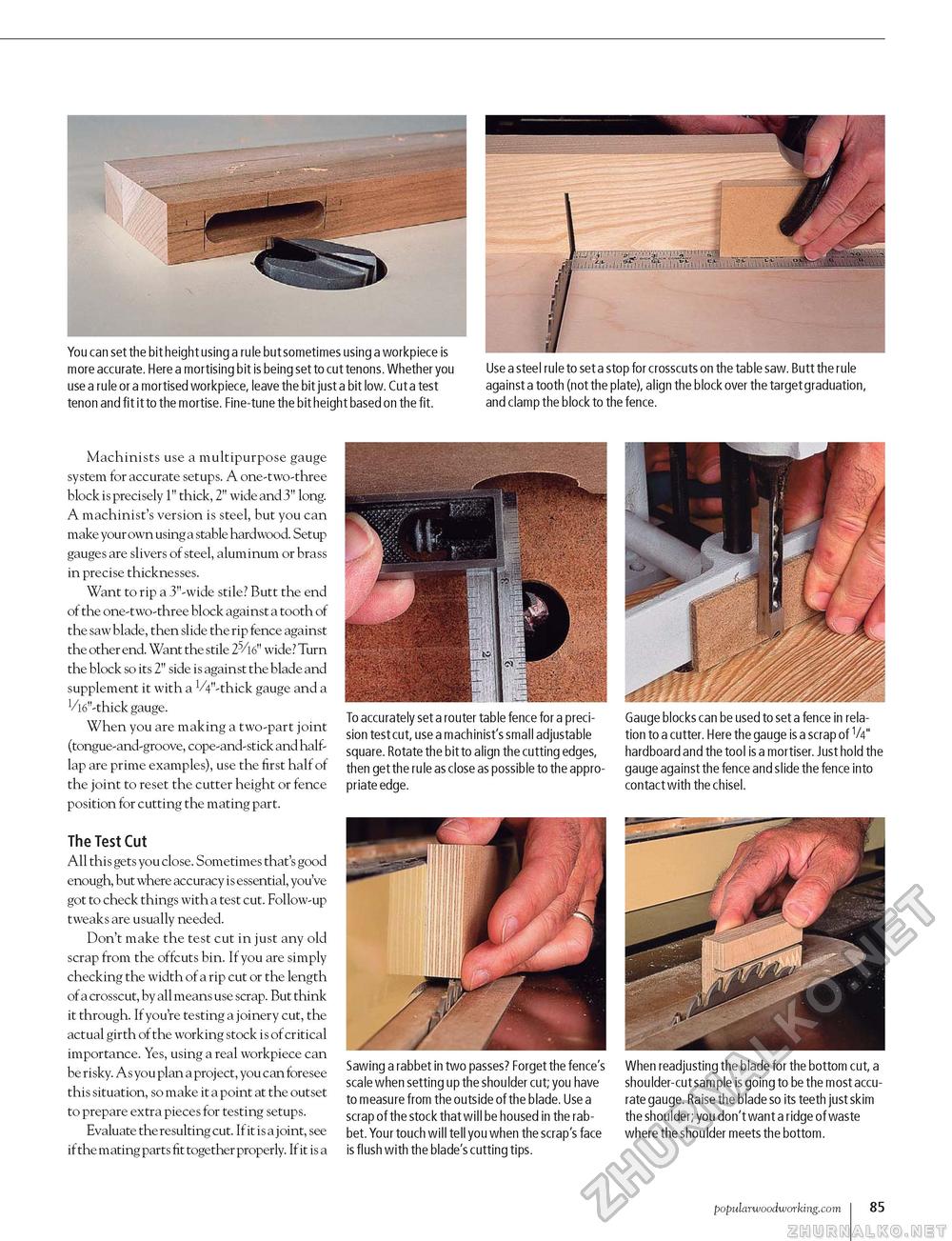Popular Woodworking 2006-04 № 154, страница 88
You can set the bit height using a rule but sometimes using a workpiece is more accurate. Here a mortising bit is being set to cut tenons. Whether you use a rule or a mortised workpiece, leave the bit just a bit low. Cut a test tenon and fit it to the mortise. Fine-tune the bit height based on the fit. Use a steel rule to set a stop for crosscuts on the table saw. Butt the rule against a tooth (not the plate), align the block over the target graduation, and clamp the block to the fence. Machinists use a multipurpose gauge system for accurate setups. A one-two-three block is precisely 1" thick, 2" wide and 3" long. A machinist's version is steel, but you can make your own using a stable hardwood. Setup gauges are slivers of steel, aluminum or brass in precise thicknesses. Want to rip a 3"-wide stile? Butt the end of the one-two-three block against a tooth of the saw blade, then slide the rip fence against the other end. Want the stile 25/16" wide? Turn the block so its 2" side is against the blade and supplement it with a VV-thick gauge and a Vl6"-thick gauge. When you are making a two-part joint (tongue-and-groove, cope-and-stick and half-lap are prime examples), use the first half of the joint to reset the cutter height or fence position for cutting the mating part. The Test Cut All this gets you close. Sometimes that's good enough, but where accuracy is essential, you've got to check things with a test cut. Follow-up tweaks are usually needed. Don't make the test cut in just any old scrap from the offcuts bin. If you are simply checking the width of a rip cut or the length of a crosscut, by all means use scrap. But think it through. If you're testing a joinery cut, the actual girth of the working stock is of critical importance. Yes, using a real workpiece can be risky. As you plan a project, you can foresee this situation, so make it a point at the outset to prepare extra pieces for testing setups. Evaluate the resulting cut. If it is a joint, see if the mating parts fit together properly. If it is a To accurately set a router table fence for a precision test cut, use a machinist's small adjustable square. Rotate the bit to align the cutting edges, then get the rule as close as possible to the appropriate edge. Gauge blocks can be used to set a fence in relation to a cutter. Here the gauge is a scrap of V4" hardboard and the tool is a mortiser. Just hold the gauge against the fence and slide the fence into contact with the chisel. Sawing a rabbet in two passes? Forget the fence's scale when setting up the shoulder cut; you have to measure from the outside of the blade. Use a scrap of the stock that will be housed in the rabbet. Your touch will tell you when the scrap's face is flush with the blade's cutting tips. When readjusting the blade for the bottom cut, a shoulder-cut sample is going to be the most accurate gauge. Raise the blade so its teeth just skim the shoulder; you don't want a ridge of waste where the shoulder meets the bottom. popularwoodworking.com i 85 |








